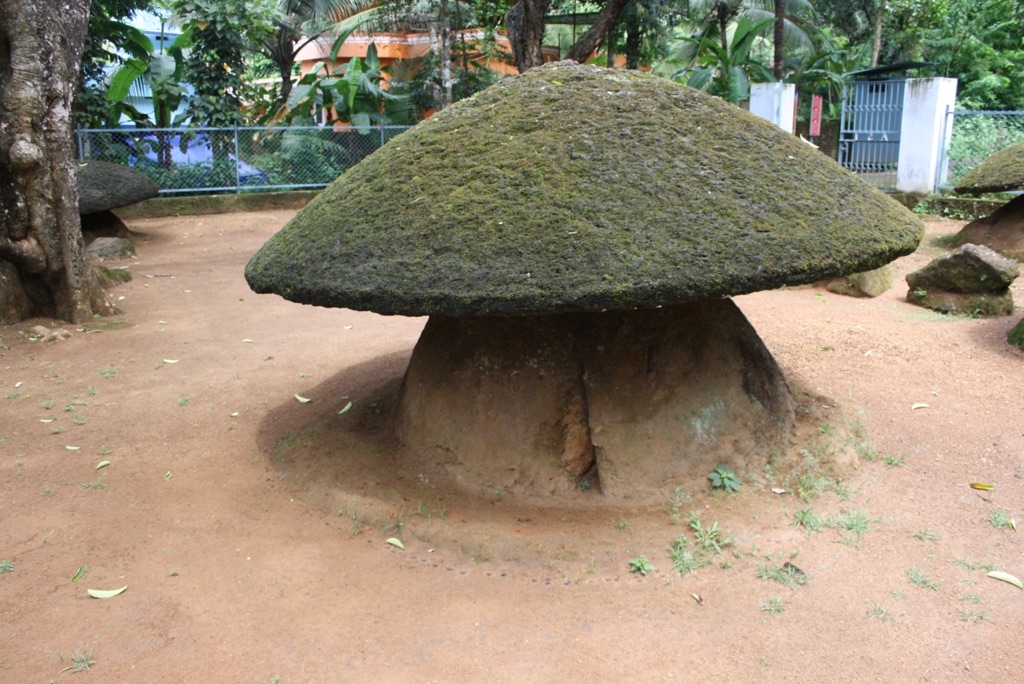The Ariyannur Umbrellas are a significant megalithic site located in Kerala, India. These ancient burial stones, also known as ‘Kudaikkallu,’ resemble huge umbrellas and date back to the Iron Age. They are a testament to the region’s prehistoric culture and have intrigued archaeologists and historians alike. The site comprises several umbrella stones, which are large, mushroom-shaped laterite structures. They are believed to mark burial sites and have been a subject of fascination due to their unique shape and construction.
Get your dose of History via Email
Historical Background of The Ariyannur Umbrellas
The Ariyannur Umbrellas were discovered in the 1950s, bringing to light a significant aspect of ancient Indian history. They were built during the Iron Age, a period that saw the rise of various megalithic cultures across the Indian subcontinent. The exact builders of these structures remain unknown, but they are attributed to the people of the Iron Age who inhabited the region. The site has not been the scene of any historically important events recorded in modern history, but it stands as a silent witness to the lives and beliefs of a bygone era.

Local legends and folklore have surrounded the site, often attributing mystical origins to the structures. However, it was the work of archaeologists that brought a scientific understanding of their purpose. The Ariyannur Umbrellas are considered to be burial sites, with the large stones marking the final resting place of individuals of significance within the ancient society. The exact identity of those buried remains a mystery, as the site has not yielded inscriptions or other identifying artifacts.
There has been no evidence to suggest that the site was inhabited later by other cultures. Its primary function appears to have been funerary, and it seems to have been left undisturbed until its discovery in the 20th century. The Ariyannur Umbrellas have not been associated with any significant historical events beyond their original purpose. Their importance lies in their cultural and archaeological value, providing insights into the mortuary practices of the Iron Age in the region.
The discovery of the Ariyannur Umbrellas was a significant milestone for Indian archaeology. It shed light on the complex and sophisticated practices of ancient societies in the region. The site has since been preserved and studied, with efforts made to understand the broader context of megalithic culture in Kerala and its connection to similar traditions across the world.
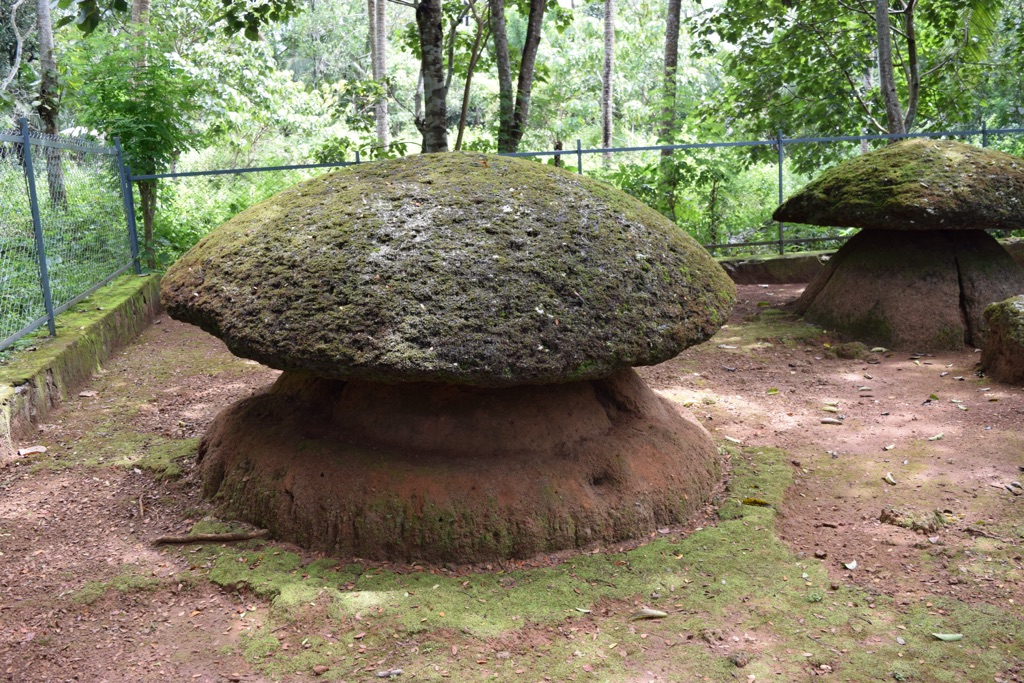
While the Ariyannur Umbrellas have not been the focus of extensive excavation, the site has been documented and protected. It serves as an important educational and cultural heritage site, attracting both researchers and tourists interested in the ancient history of India. The structures stand as a testament to the ingenuity and beliefs of the Iron Age people, offering a tangible connection to India’s prehistoric past.
About The Ariyannur Umbrellas
The Ariyannur Umbrellas are a group of megalithic burial stones located in the Thrissur district of Kerala, India. These structures are made of laterite, a type of iron-rich soil that hardens on exposure to air, making it an ideal building material in the region’s tropical climate. The stones are notable for their large size and distinctive shape, which resembles that of an umbrella or mushroom, hence their name.
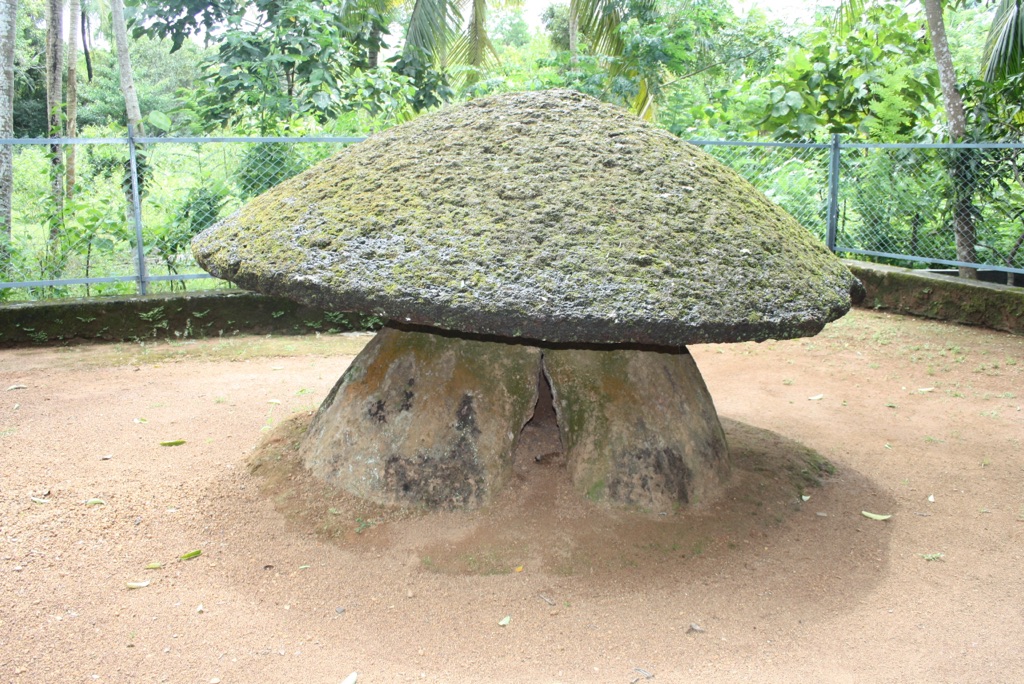
The construction of these megaliths involved carving the laterite into the desired shape and then erecting them over the burial site. The process would have required considerable skill and labor, indicating the importance of the individuals for whom these megaliths were constructed. The umbrella stones vary in size, with some reaching several meters in height and diameter, showcasing the variation in burial practices.
Architecturally, the Ariyannur Umbrellas are simple yet striking. They do not possess intricate carvings or decorations, but their sheer size and form make them an impressive sight. The structures are characterized by a flat top supported by a central pillar, which is often surrounded by a circular arrangement of smaller stones, possibly indicating the boundary of the burial site.
The method of construction and the materials used for the Ariyannur Umbrellas are consistent with other megalithic sites in India. However, their unique shape sets them apart and highlights the regional variations in megalithic architecture. The laterite used in their construction has withstood the test of time, preserving the structures for thousands of years.
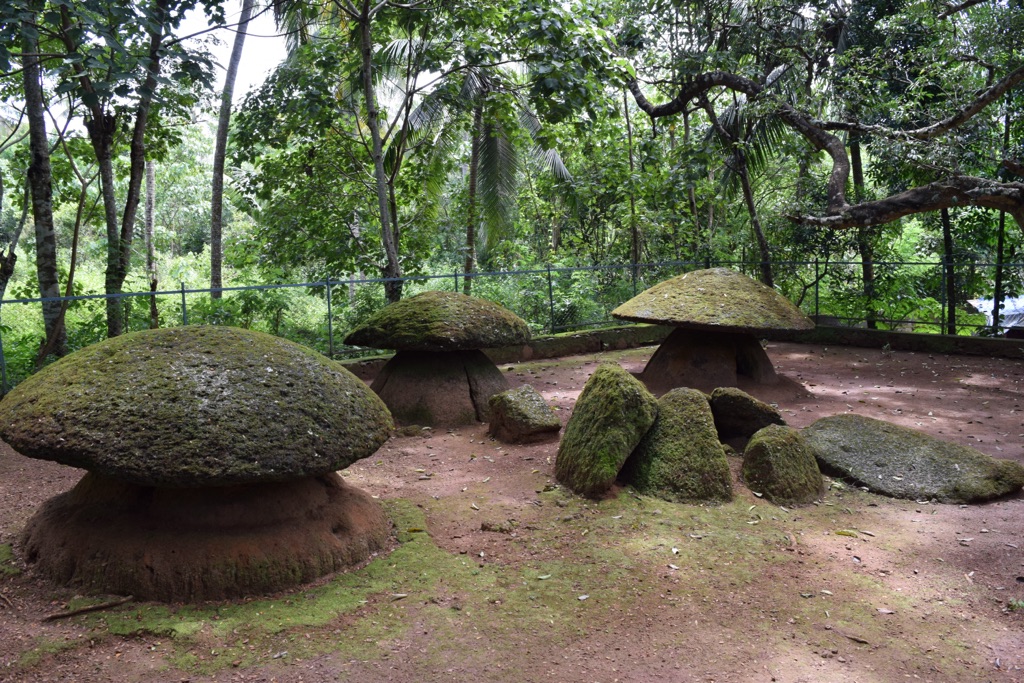
Today, the Ariyannur Umbrellas are a protected monument under the Archaeological Survey of India. They are an important cultural landmark and provide a glimpse into the architectural practices and societal structures of Iron Age India. The site continues to be a subject of study and admiration, contributing to our understanding of ancient Indian history.
Theories and Interpretations
Several theories have been proposed regarding the purpose and significance of the Ariyannur Umbrellas. The most widely accepted theory is that they served as burial markers, signifying the resting places of important individuals or families. The size and effort involved in their construction suggest that those buried beneath them held a high status within their community.
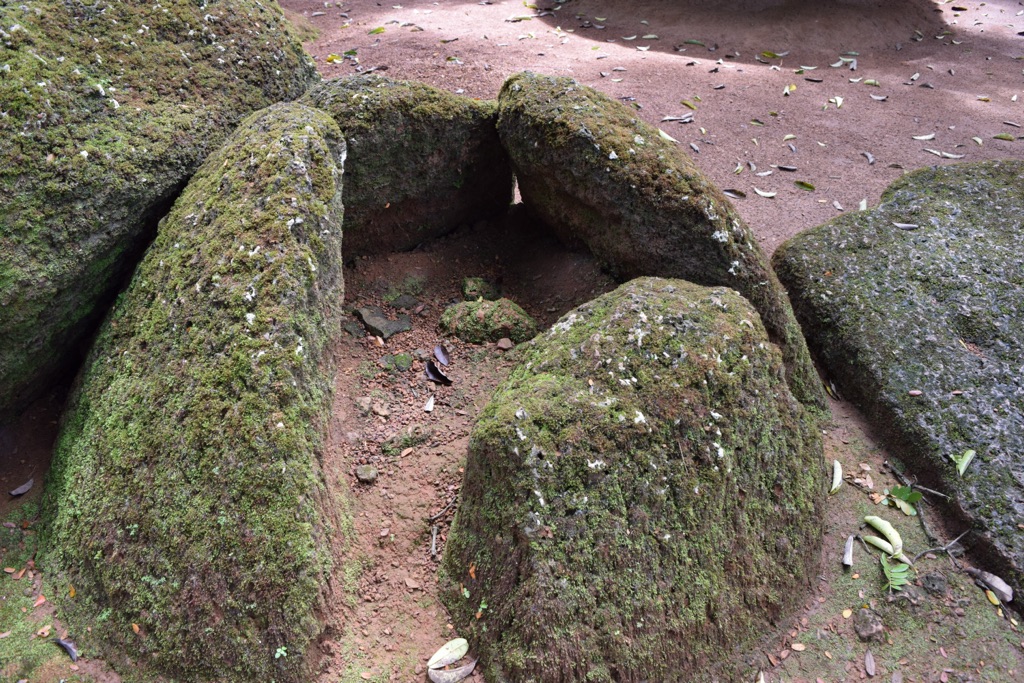
Some researchers have speculated that the umbrella shape of the stones may have had symbolic meaning, possibly related to protection or status. However, without written records or inscriptions, the exact symbolism remains a matter of interpretation. The circular arrangement of stones around the central megalith may indicate a ritualistic aspect to the burials, perhaps delineating a sacred space.
The mysteries surrounding the Ariyannur Umbrellas have led to various interpretations, some rooted in local folklore and others in academic study. The lack of artifacts or remains at the site has made it challenging to draw definitive conclusions about the people who built them and the rituals they may have practiced.
Dating of the site has been carried out using relative dating methods, comparing the Ariyannur Umbrellas to other similar megalithic structures in the region. These studies have placed the construction of the site in the Iron Age, although the exact dates remain approximate due to the limitations of the dating methods used.

The Ariyannur Umbrellas continue to be a subject of fascination and study. As archaeological techniques advance, it is hoped that further excavations and research will shed more light on the enigmatic past of these megalithic structures and the people who created them.
At a glance
Country: India
Civilization: Iron Age civilization of the Indian subcontinent
Age: Iron Age (approximately 1000 BCE to 500 BCE)

